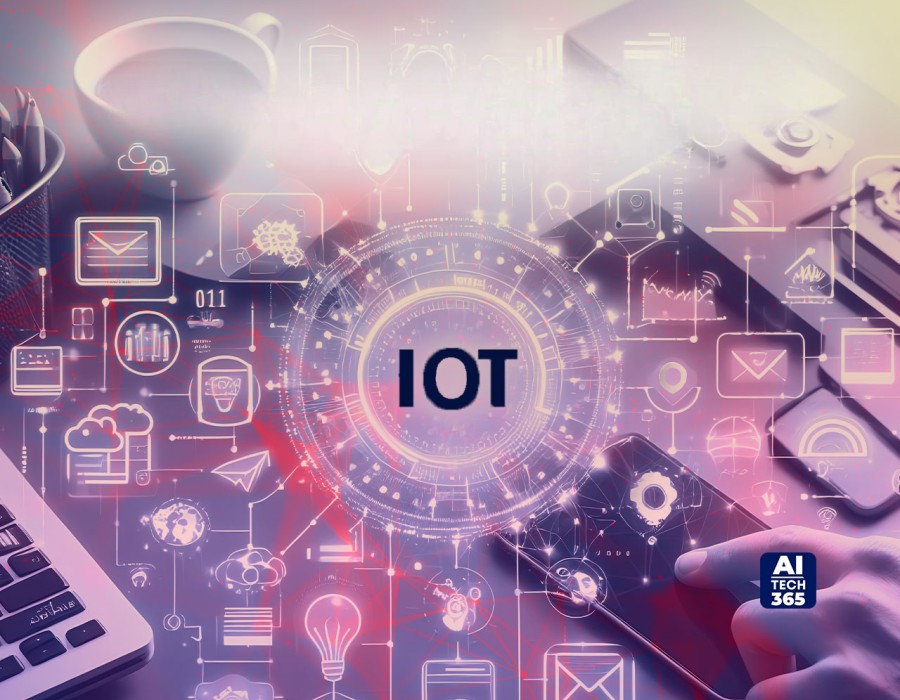Since its inception in 1999, the Internet of Things (IoT) has rapidly influenced both personal and industrial landscapes. Today, as advancements in artificial intelligence (AI) continue to evolve, IoT automation is transforming how we live, turning conceptual innovations into reality. With ubiquitous computing, increased use of Internet Protocol (IP), and continuous developments in data analytics, the growth of IoT shows no signs of slowing down.
According to Statista, it is expected that by 2030, 29.42 billion devices will be connected to IoT. This staggering figure represents just the surface of this expanding technology. In this article, we'll delve into IoT and automation, exploring how these technologies are reshaping industries and daily life.
What is IoT?
The Internet of Things (IoT) refers to a network of physical devices that are connected via the internet, enabling them to collect and share data. These "smart" devices, equipped with sensors, software, and internet connectivity, communicate with each other, expanding the internet's reach beyond traditional computing systems like smartphones or computers.
Everyday objects like smart home appliances, wearable tech, industrial machinery, and even autonomous vehicles now have advanced computational and analytical capabilities due to IoT. This interconnected web of devices enhances efficiency, safety, and convenience across various sectors.
Understanding IoT Automation
IoT automation merges the capabilities of IoT devices with automated workflows to optimize productivity and operational efficiency across industries. Through the data collected from connected sensors, automated systems can trigger actions without human intervention, enabling smarter decision-making and faster responses.
A key player in IoT automation is Amazon Web Services (AWS), which offers solutions like AWS IoT Core, AWS IoT Greengrass, and AWS IoT SiteWise. These platforms enable large-scale IoT device management and seamless data processing, fostering the automation of operations across various fields.
How IoT Devices Connect Through Automation
IoT automation relies on a series of components working together:
Sensors: Collect real-time data from the environment.
Connection & Identification: Each device has a unique IP address, enabling communication with other systems.
Actuators: Devices take action based on sensor data and network feedback.
IoT Gateway: Facilitates data flow between devices and the cloud.
Cloud Infrastructure: Centralized processing of vast amounts of data for analysis and management.
User Interface: Allows users to interact with devices, view collected data, and issue commands.
By integrating these components, IoT automation ensures smooth, efficient operations without constant human oversight.
The Benefits of IoT Automation
IoT automation offers significant benefits across various industries:
Improved Security: Strengthened access control and regulatory compliance.
Enhanced Customer Insights: IoT automation provides real-time data on customer behaviors, improving user experiences.
Increased Operational Uptime: Automation boosts productivity, reducing downtime across industries.
Industrial Efficiency: From real-time quality control to process optimization, IoT automation revolutionizes manufacturing.
Cost Savings: Businesses benefit from reduced operational costs and improved scalability.
The Role of IoT in Industrial Automation
IoT plays a crucial role in industrial automation, driving connectivity and transforming operations. In 2010, there were only 0.8 billion IoT devices compared to 8 billion non-IoT devices. However, by 2025, IoT devices are projected to surpass 30.9 billion, while non-IoT connections will increase modestly to 10.3 billion.
This shift in connectivity is largely fueled by automation technologies, as IoT-enabled devices now transmit real-time data on their status and performance. Through cloud computing and advanced data analytics, automation software can manage and adapt to these devices more efficiently, paving the way for smart factories and more responsive industrial processes.
Real-World Applications of IoT Automation in Industry
Here are three examples of IoT automation in action within industrial settings:
Amazon: By integrating Kiva's robotic technology, Amazon uses thousands of Wi-Fi-connected robots to retrieve products in their warehouses, reducing operating costs by 20%.
Caterpillar: Leveraging augmented reality (AR), Caterpillar predicts maintenance needs based on sensor data. Their AR app delivers real-time insights, allowing for efficient machine upkeep.
Rolls-Royce: Rolls-Royce is developing drone ships that are remotely controlled through AR technology. These autonomous vessels use AI and machine learning for navigation, with remote intervention capabilities for seamless operation.
Conclusion
The integration of IoT automation continues to revolutionize industries, delivering increased efficiency, productivity, and improved decision-making. As businesses embrace these emerging technologies, they can gain a competitive edge in the ever-evolving Industry 4.0 landscape.
By harnessing the power of IoT and automation, companies can unlock new levels of operational performance and customer satisfaction, ensuring long-term success in the digital era.





Comments